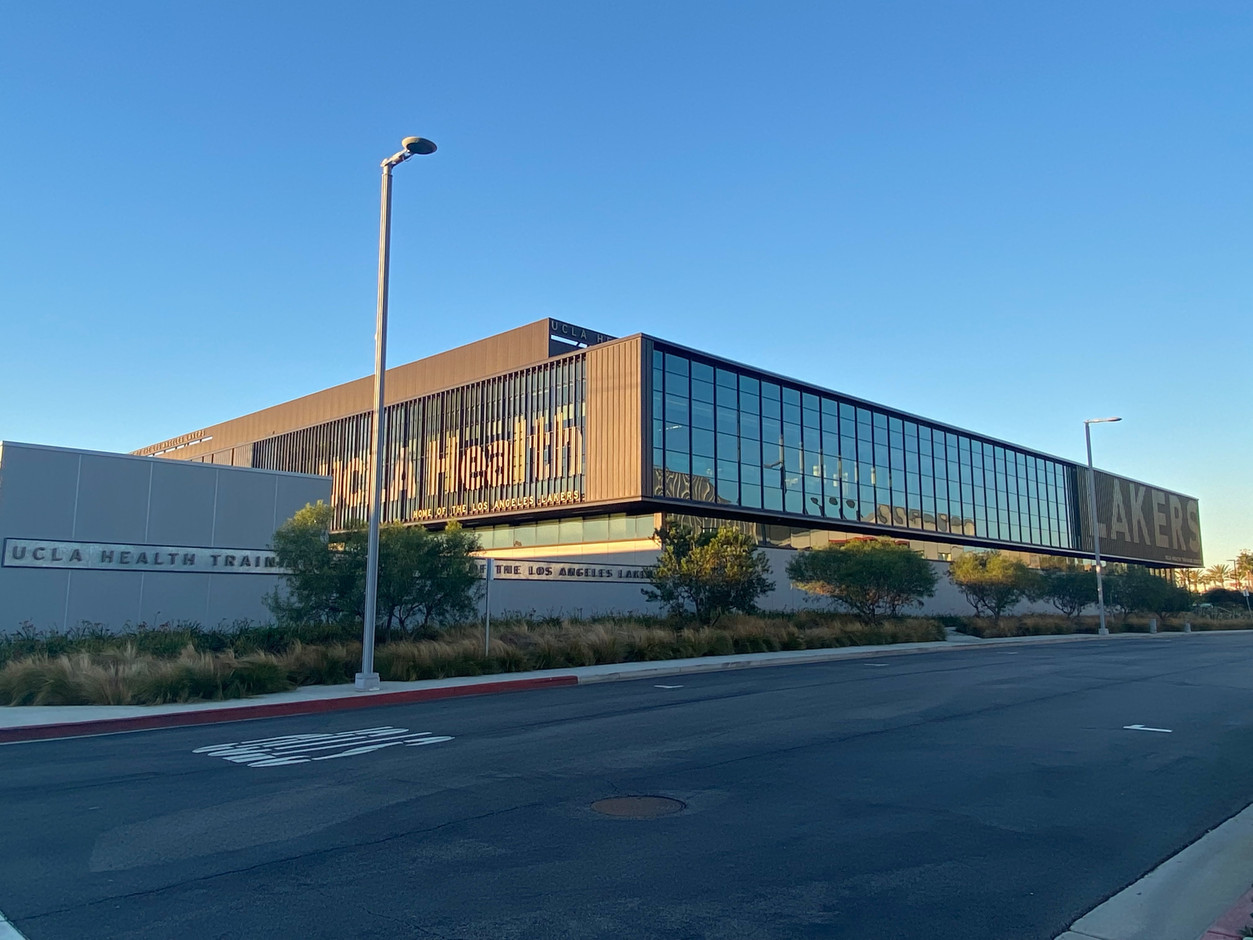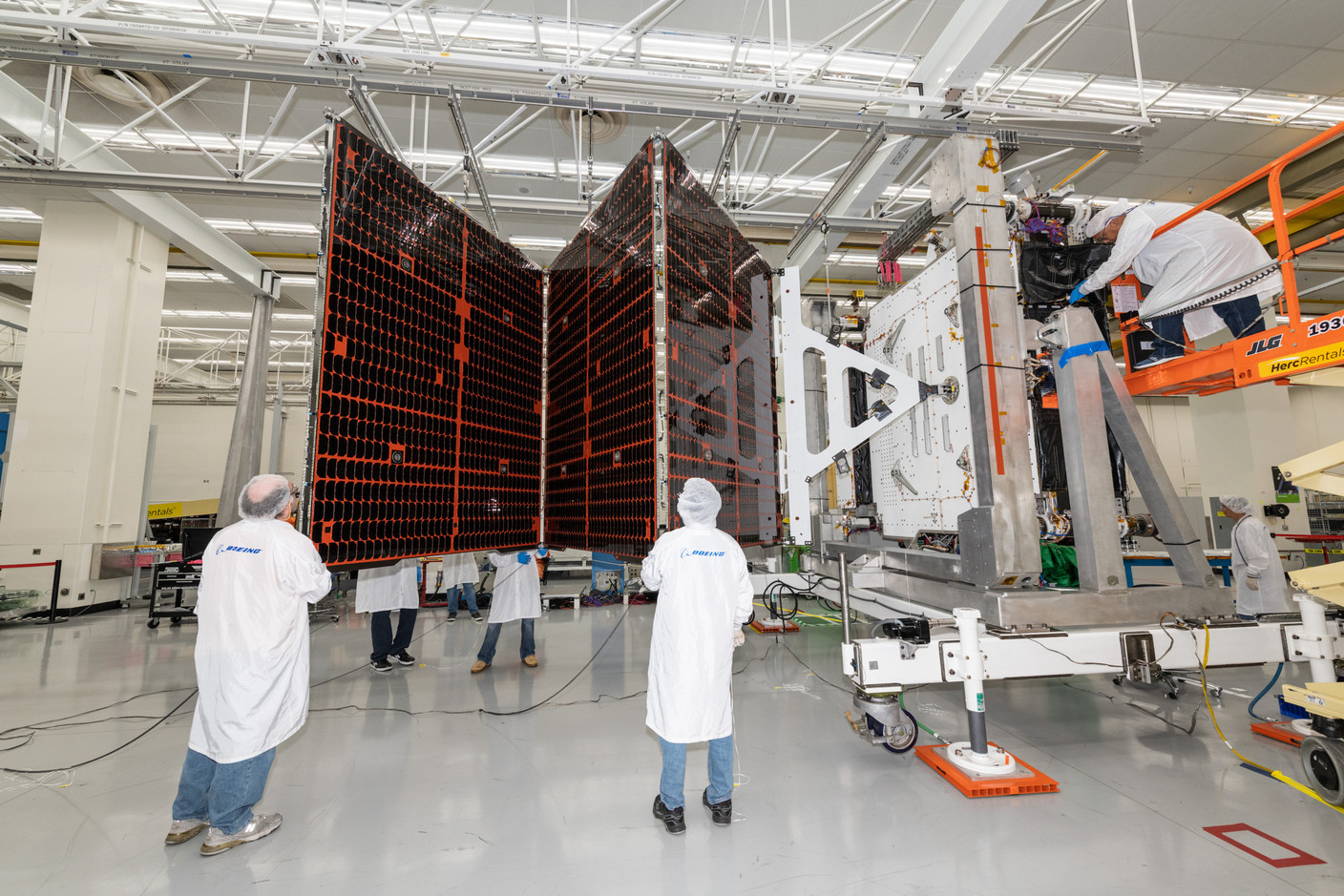“Welcome to El Segundo, a crime watch community,” warns a white sign between two palm trees and ads for police and firefighters. A man pushes a cart full of his life, a toothless, benevolent smile on his lips. Another one sleeps, parked along the pavement. At a time when Los Angeles is struggling to house the growing number of homeless and to contain unbridled violence, this neighbourhood seems as clean as Switzerland, with only gleaming, noisy pick-ups and Tesla cars floating in the wind of American success.
Between “LAX,” the airport of Los Angeles, and sexy Manhattan Beach where the mansions compete in modernity with the restaurants’ cuisine, El Segundo remains what it has always been: a sober industrial district, and a special place where the famous aviator-entrepreneur Howard Hughes replaced The Nash Automobile Company in 1955... before his land was taken over by Boeing in 2000 to finally set up its subsidiary Boeing Satellite Systems (BSS).
Almost all the heavyweights of the space and aeronautics industries are present here, in a sort of open-air ecosystem of the future, so to speak.
This is where Boeing and SES have been developing the new generation of O3bmPower satellites since 2016, the first two of which are due to be launched from Cape Canaveral on 15 December. Two “partners in crime,” as they laughingly call themselves--Boeing Commercial Satellite System President Ryan Reid and SES Chief Technology Officer Ruy Pinto--are taking a handful of American and European journalists on a tour of their technological jewel. Of course, the latter had to show their credentials and leave their cameras, recorders and smartphones behind.
An essential satellite with revenues set to double
The stakes are high. Satellite industry revenues are expected to double from less than $10bn this year to nearly $25bn in 2030: the integration of satellite into terrestrial connectivity and 3G/4G/5G deployments; the ambition to connect those who are not connected at all; the demand for connectivity in the air and at sea from the 200,000+ ‘craft’ that want to have access to the Internet; the growing demand from government agencies (who will want up to 140 Mbps for their drones by 2030) and the efforts of LEO stars like Starlink to go direct to individual users.
The second generation of O3bmPower provides full configurability. You can change the number of receivers and create a new dynamic at any time. At this level and being so compact, it's unheard of.
With its 5,000 beams that can be fully reconfigured in a second, the software-driven satellite can play all the games: customers interested in extreme flexibility, such as planes, jets and tankers ($4bn expected by 2030); those interested in flexibility and ultra high speed, such as drones, cruise ships, military ships and superyachts ($8bn); those who need ultra high speed broadband such as oil and gas platforms, fixed government sites or mining sites ($2bn) and those who need less flexibility or ultra high speed broadband such as ordinary consumers, fishing boats or more traditional businesses and agencies ($11bn).
“Why are we so excited about O3Bmpower?” asks Pinto. “People talk about low-orbit satellites, Starlink, OneWeb, Kuiper, Lightspeed--the list is long--but we have something special in this context: the second generation of O3bmPower provides full configurability. One of these satellites alone has 5,000 beams. You can change the number of receivers and create a new dynamic at any time. At this level and being so compact, it’s unheard of. The way Boeing has integrated everything is incredible. It beats anything that exists today!”
The ideal solution for airlines
The point is to be able to, for example, track an aircraft in the sky, to provide connectivity to those travelling. While this exists, the experience remains very random depending on the airlines and the solutions they choose. “Different airlines are taking different solutions with different approaches and wondering how to monetise the experience. But flexibility is going to be particularly important,” says Reid. At the moment, “airlines are very protective of their customer relationships. All of them will dictate how they want to bring connectivity to their customers. And we will have very little influence,” adds Pinto.
To satisfy SES’s appetite, Boeing had to start from scratch and challenge everything from its previous seven generations of satellites (from Gen 1 in 1995 to Gen 7 in 2016). The result of “702x”--the code name for its new platform--is spectacular:
- the weight, an additional cost factor for the launch, has been halved to 1,900 kilos from 3,750 kilos.
- the number of components has been reduced from 4,500 to 350;
- the cables from 1,275 to 65;
- and the 85 amplifiers are no longer needed.
The cloud, another key element of the strategy
Not to mention its improved radiation resistance, electric propulsion, shape that allows several to be launched at once, solar panel deployment system and autonomous operations.
Boeing has already begun marketing its new platform. Should this bother SES? No, says the technology director of the Luxembourg-based operator. “Would we have been prepared to pay Boeing more for exclusive technology to slow down the competition? Or would we have been willing to get it faster and cheaper? To be the first to deploy it on the market? There are pros and cons. We believe in speed. Like the US government that bought it, we are designing and preparing the next generation. That’s how we think. We just need to be faster. Faster but not complacent. We really need to get going.”
Among the things that make SES very optimistic: its links with cloud operators, to facilitate the flow of data, wherever it is ‘consumed.’ “We have a multi-cloud strategy. We have a distribution agreement with AWS, for example, but we work with IBM Cloud. We have started talking to Google Cloud. We think we offer a better service with Microsoft and if our customer is already using it, it is easier for them. You also have to remember that Microsoft will also go to their customers, sometimes, and say they have a connectivity partner, SES. AWS is stronger in video than Microsoft and our customer at AWS will have a good service too, but not in the same depth as with Microsoft,” explains the SES technology director.
Another first with SpaceX
The visit to the mythical factory, nearly 93,000 square metres, begins with the “Hall of fame,” where all the flags of those who have been customers or partners of Boeing fly, including Luxembourg and SES, since the beginning of the partnership goes back to Astra 1C, launched in May 1993 for 12 years and which will provide 18 years of good and loyal service. Integration zone of the “beast,” deployment zone of the solar panel wings, thermal vacuum zone, integration zone in its sending module and acoustic test zone.
On 6 December, the first two satellites arrived at Cape Canaveral where a SpaceX Falcon 9 is waiting for them. They will be launched around 15 December, followed by four more in March 2023 to commercialise this unique service. This is another first for SES, which was the first to entrust a satellite to Elon Musk’s first rocket in 2013 for a satellite in geostationary orbit, and then the first to entrust a satellite (SES10) to a “recycled” rocket in April 2016.
This story was first published in French on . It has been translated and edited for Delano.


















